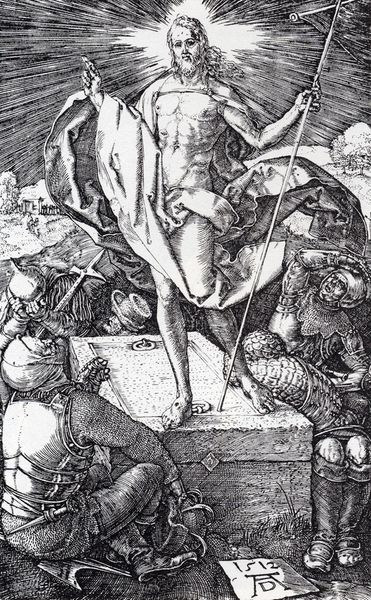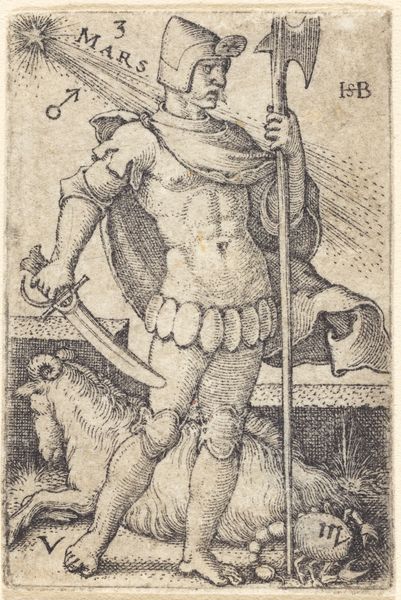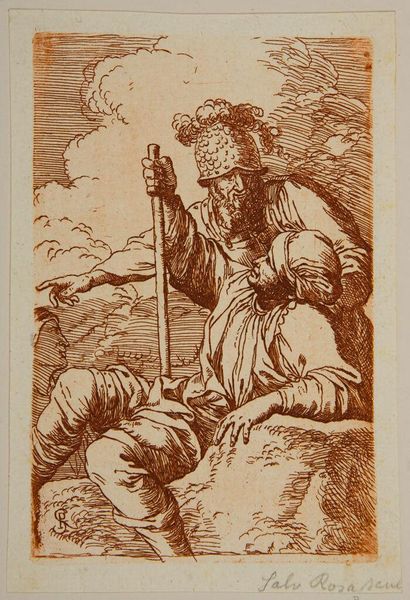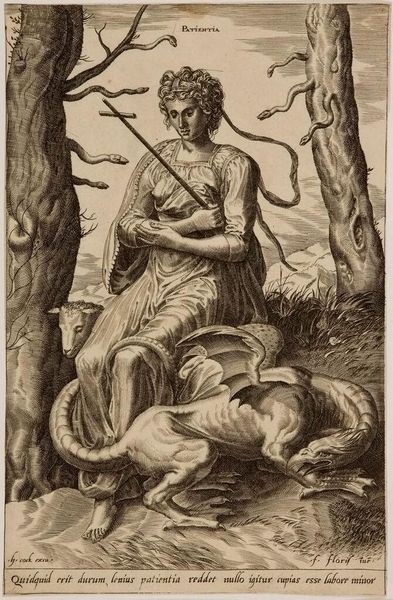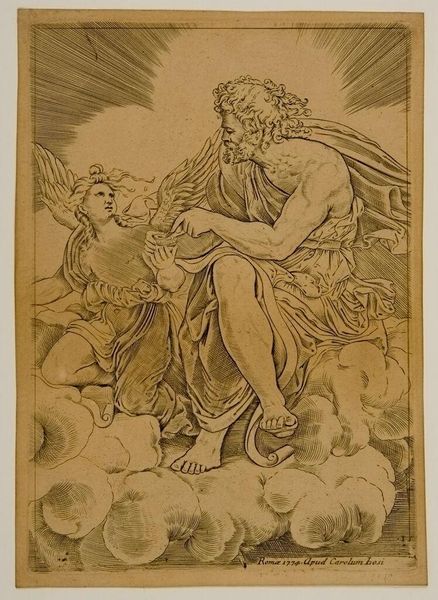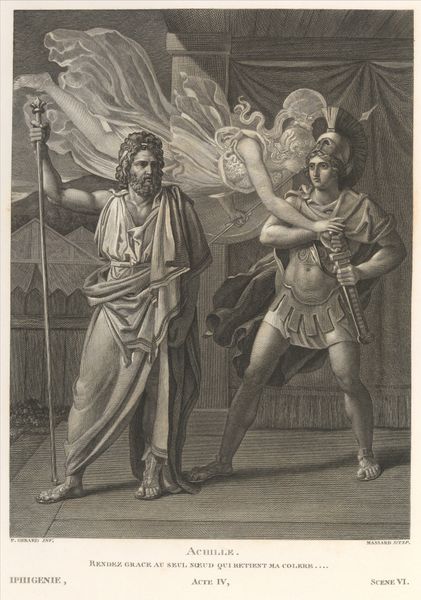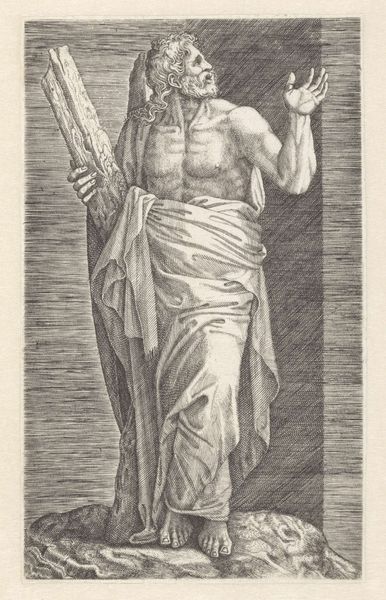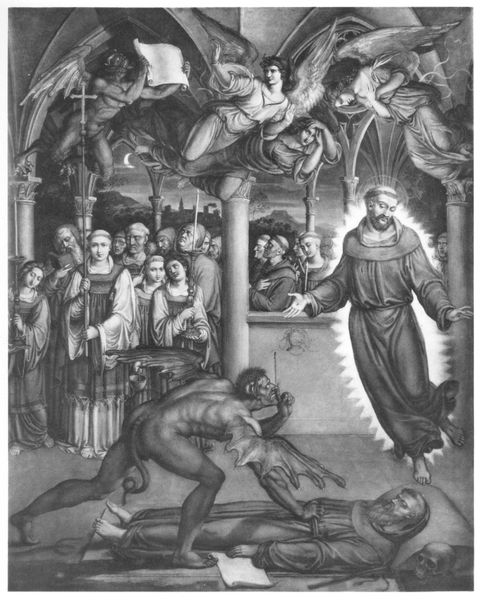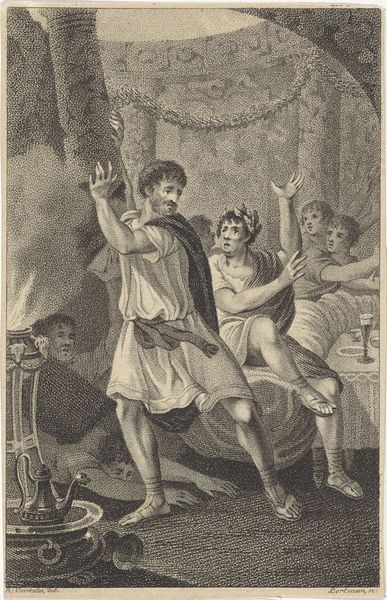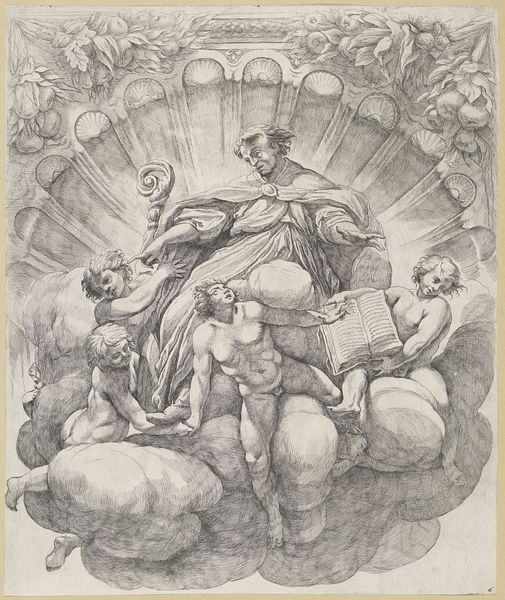
drawing, watercolor
#
drawing
#
pen illustration
#
figuration
#
watercolor
#
symbolism
#
watercolour illustration
#
genre-painting
#
history-painting
#
academic-art
#
cartoon carciture
Copyright: Public Domain: Artvee
Editor: Walter Crane's watercolor and ink drawing, "Perseus Showing the Gorgon's Head" from 1893, has this very theatrical feel. It's like a scene from a play, with everyone reacting so dramatically to Medusa's head. I'm struck by how staged it all appears, the almost cartoonish features, and the way Perseus presents the head as if on a platter. What is your interpretation of this work in terms of its cultural context? Curator: Well, it's interesting you say "theatrical". Crane was deeply involved in the Arts and Crafts movement, which reacted against industrialization and celebrated handcraftsmanship and, importantly, accessible art. So the staged effect, as you call it, connects to a larger project of creating a moral, instructive public imagery. How do you think the myth of Perseus and Medusa factors into this "instructive" intention? Editor: I suppose Perseus is the hero overcoming evil, and that’s a story people would want to hear again and again… Curator: Exactly! It is more than that, I'd argue. These stories provided moral and social frameworks. Academic art often sought to ennoble its viewers through these historical and mythical subjects, influencing public perceptions. Is it perhaps also related to a political situation at the time? The need of having the heroes present and available. Editor: I hadn't really considered the public role of history paintings that much, so thanks for offering your view! Curator: And I found your comment on its 'theatricality' useful as it pinpointed an intentional gesture that really brings into focus what kind of 'public art' it tried to be.
Comments
No comments
Be the first to comment and join the conversation on the ultimate creative platform.


